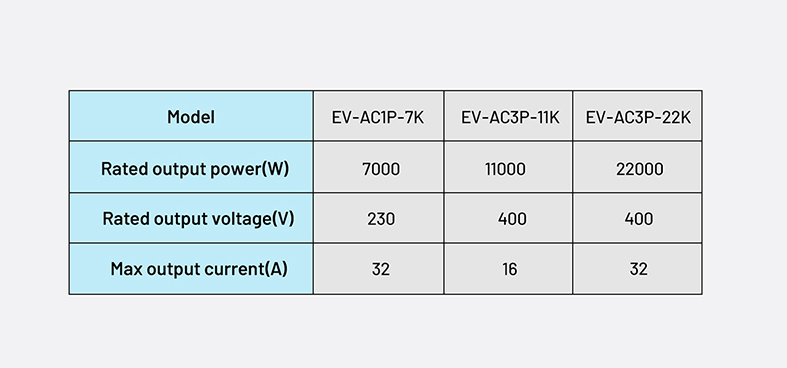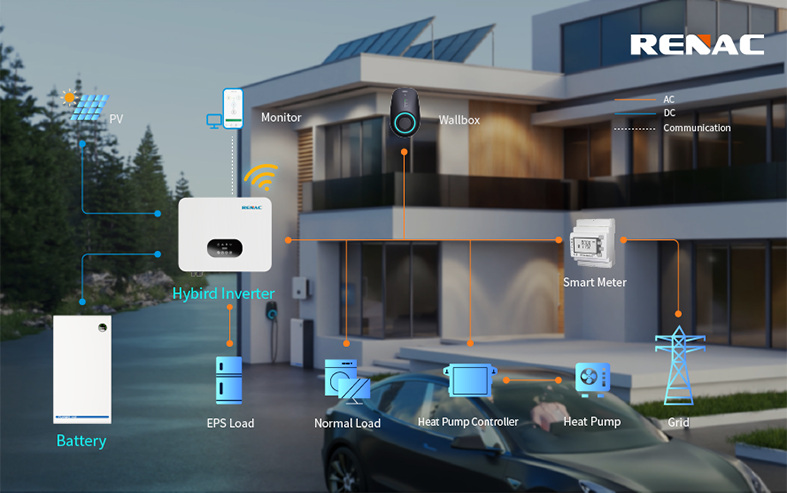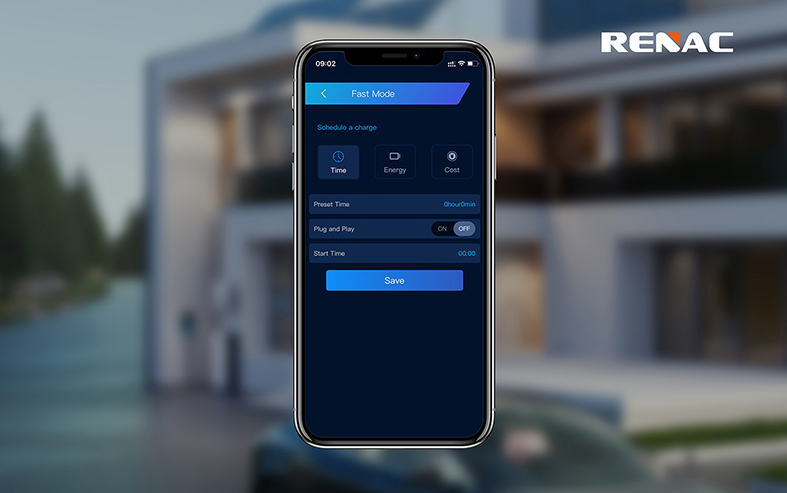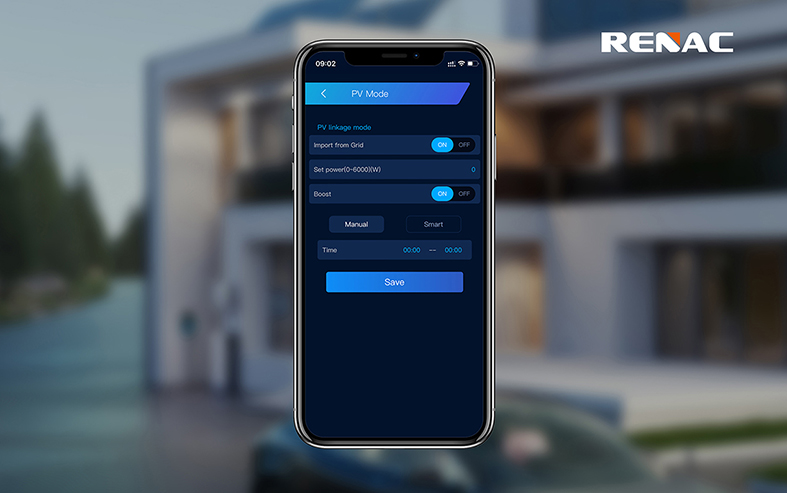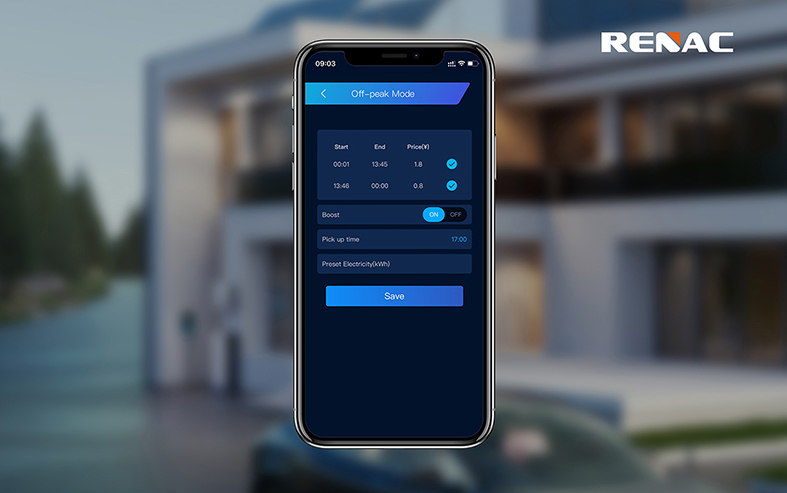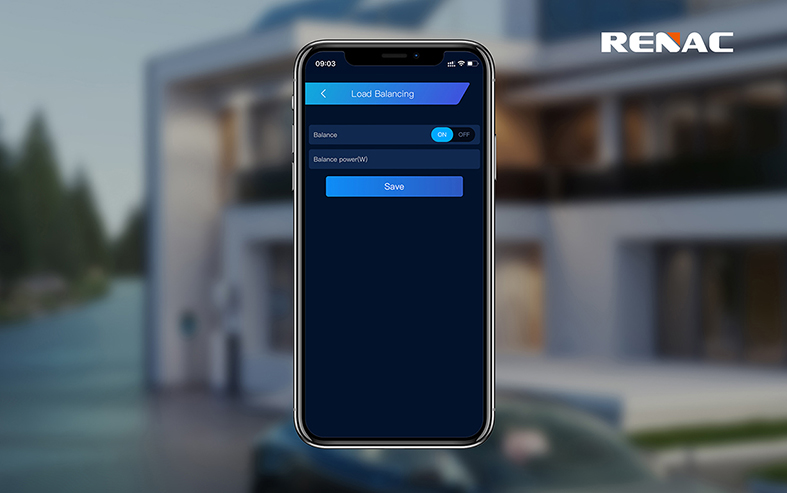● Smart Wallbox development tendency and application market
The yield rate for solar energy is very low and the application process can be complicated in some areas, this has led some end users to prefer using solar energy for self-consumption rather than selling it. In response, inverter manufacturers have been working on finding solutions for zero export and export power limits to improve PV system energy usage yield. Additionally, the increasing popularity of electric vehicles has created a greater need for integrating residential PV or storage systems to manage EV charging. Renac offers a smart charging solution that is compatible with all on-grid and storage inverters.
● Renac Smart Wallbox solution
Renac Smart Wallbox series including single phase 7kw and three phase 11kw/22kw
The Renac Smart Wallbox can charge vehicles using surplus energy from photovoltaic or photovoltaic storage systems, resulting in 100% green charging. This enhances both self-generation and self-consumption rates.
● Smart Wallbox work mode introduction
It has three work mode for Renac Smart Wallbox
1.Fast Mode
The Wallbox system is designed to charge the electric vehicle at maximum power. If the storage inverter is in self-use mode, then PV energy will support both the home loads and the wallbox during the daytime. In case the PV energy is insufficient, the battery will discharge energy to the home loads and wallbox. However, if the battery discharge power is not enough to support the wallbox and home loads, the energy system will receive power from the grid during that time. Appointment settings can be based on time, energy, and cost.
2.PV Mode
The Wallbox system is designed to charge the electric vehicle using only the remaining power generated by the PV system. The PV system will prioritize supplying power to the home loads during the daytime. Any excess power generated will then be used to charge the electric vehicle.If the customer enables the Ensure Minimum Charging Power function, the electric vehicle will continue to charge at a minimum of 4.14kw (for 3-phase charger) or 1.38kw (for one-phase charger) when the PV energy surplus is less than the minimum charging power. In such cases, the electric vehicle will receive power from either the battery or grid. However, when the PV energy surplus is more than the minimum charging power, the electric vehicle will charge at the PV surplus.
3.Off-peak Mode
When the Off-Peak mode is enabled, the Wallbox will automatically charge your electric vehicle during off-peak hours, helping to reduce your electricity bill. You can also customize your low-rate charging time on the Off-Peak mode. If you manually input the charging rates and choose the off-peak electricity price, the system will charge your EV at maximum power during this period. Otherwise, it will charge at the minimum rate.
● Load balance function
When you choose a mode for your Wallbox, you can enable the load balance function. This function detects the current output in real-time and adjusts the output current of the Wallbox accordingly. This ensures that available power is used efficiently while preventing overload, which helps to maintain the stability of your household electrical system.
● Conclusion
With the continuous rise in energy prices, it is becoming increasingly important for solar rooftop owners to optimize their PV systems. By increasing the self-generation and self-consumption rate of PV, the system can be fully utilized, allowing for a large degree of energy independence. To achieve this, it is highly recommended to expand PV generation and storage systems to include electric vehicle charging. By combining Renac inverters and electric vehicle chargers, a smart and efficient residential ecosystem can be created.



